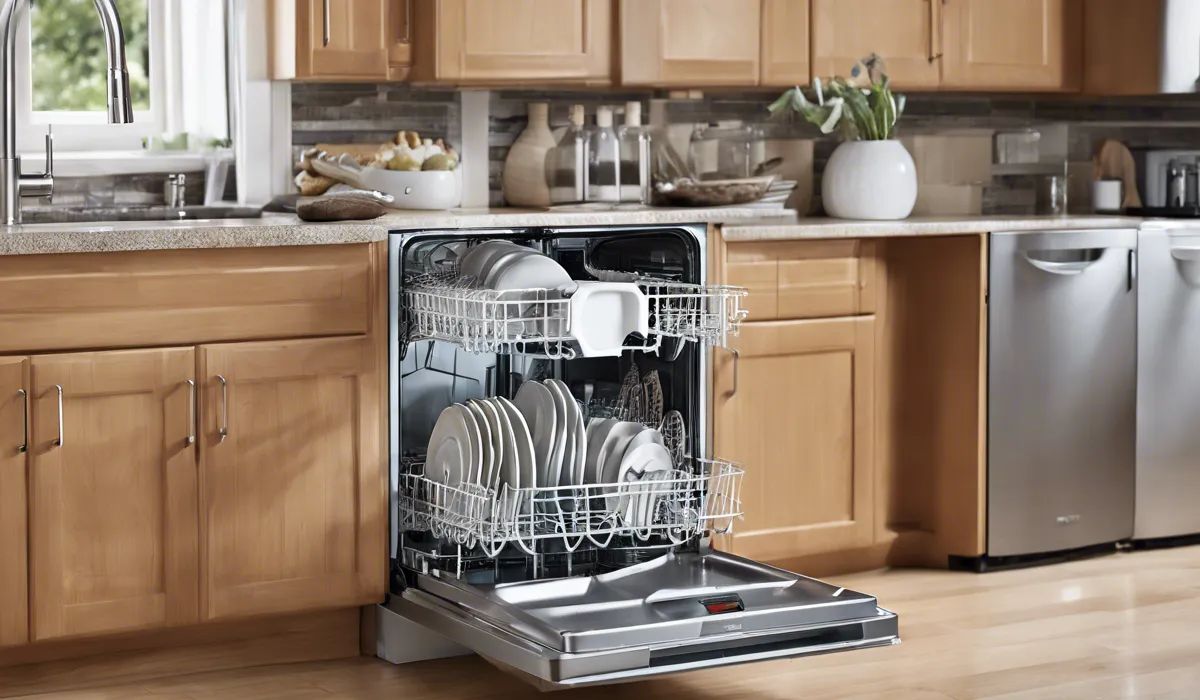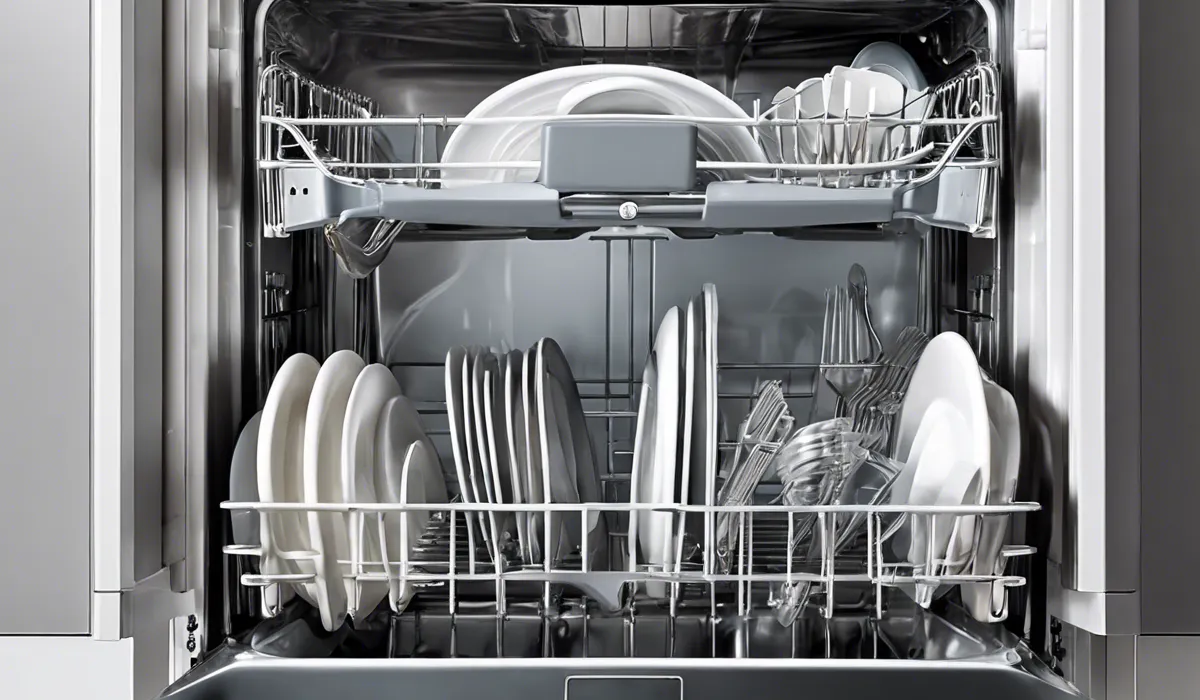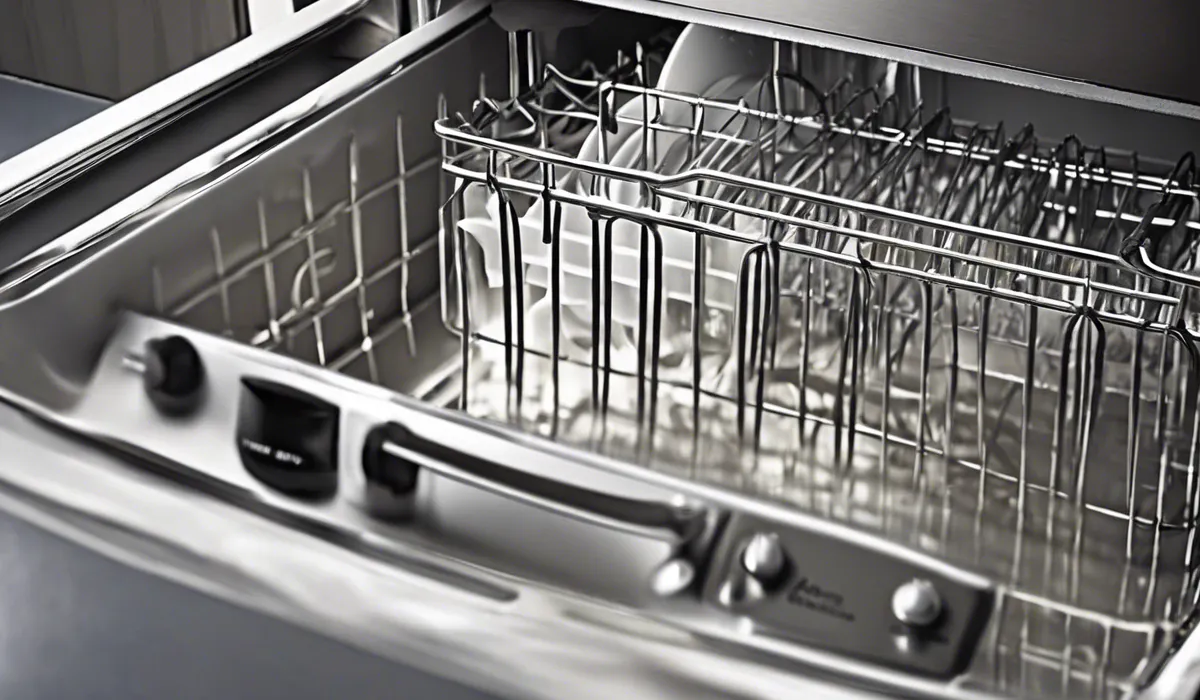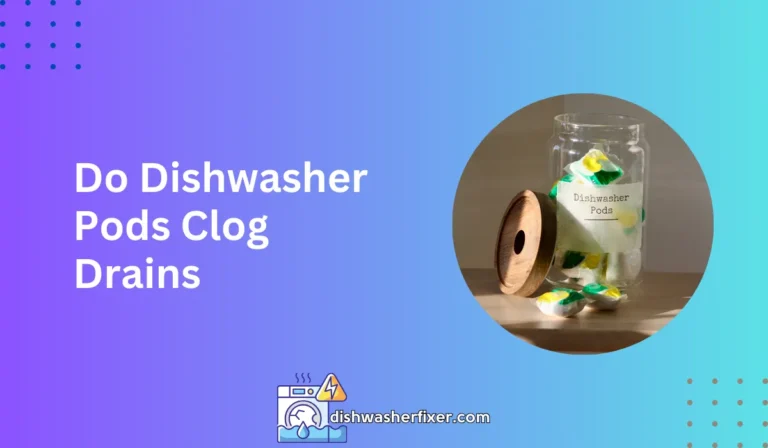How to Rinse Dishwasher: Better Results
To rinse a dishwasher, fill a dishwasher-safe cup with white vinegar and place it on the top rack. Run a hot water cycle with the dishwasher empty, except for the cup. Afterwards, sprinkle baking soda on the bottom and run a short, hot water cycle.
Step-by-Step Guide to Rinsing Your Dishwasher

Importance of Regular Rinsing
Keeping your dishwasher clean is essential for maintaining its efficiency and extending its lifespan.
Regular rinsing prevents the buildup of food particles and grease, which can cause unpleasant odors and potentially damage the machine over time.
A clean dishwasher also ensures that your dishes come out sparkling after every cycle. By routinely rinsing your dishwasher, you can avoid the extra work of rewashing dishes and ensure a hygienic environment for your kitchenware.
Items Needed for the Rinsing Process
Before you begin, make sure you have white vinegar, baking soda, a dishwasher-safe cup, and a soft cloth or sponge.
These simple household items will help you thoroughly clean and rinse your dishwasher without the need for harsh chemicals.
Unloading the Dishwasher
The first step is to remove all dishes and utensils from your dishwasher. This ensures that you can access all parts of the appliance for a complete rinse. Check the racks for any leftover food debris and remove it.
Removing and Rinsing the Filter
Locate the dishwasher filter, usually found at the bottom of the machine. Carefully remove it, following the manufacturer’s instructions.
Rinse the filter under running water, using a soft brush if necessary to remove any trapped particles. Once clean, put the filter back in place securely.
Running a Rinse Cycle with Vinegar
Fill a dishwasher-safe cup with white vinegar and place it on the top rack. The vinegar will help to dissolve grease and buildup, as well as deodorize your dishwasher.
Run a hot water cycle with the dishwasher empty, except for the cup of vinegar. By the end of the cycle, the vinegar will have worked its magic throughout the machine.
Wiping Down the Interior Surfaces
Once the vinegar cycle is complete, open the dishwasher and use a soft cloth or sponge dampened with vinegar or hot water to wipe down the interior surfaces.
Pay special attention to the door edges, the area around the seal, and any nooks where debris can accumulate.
Checking and Cleaning the Spray Arms
Examine the spray arms to ensure that the water holes are not blocked by food particles or mineral deposits.
If they are clogged, use a toothpick or a small brush to gently clear the holes. This will help maintain strong water pressure during the wash cycles.
Tips for Maintaining a Clean Dishwasher

Regular Maintenance Schedule
Set a regular schedule for rinsing your dishwasher. Depending on your usage, a monthly rinse can keep your dishwasher in top condition. Mark it on your calendar as a reminder to prevent buildup before it starts.
Using the Right Detergent
Select a detergent that is suitable for your dishwasher and the water hardness in your area. Some detergents are specifically designed to prevent mineral buildup and can keep your dishwasher cleaner for longer.
Loading the Dishwasher Properly
Load the dishwasher according to the manufacturer’s instructions. Ensure that dishes do not block the spray arms and that the detergent dispenser can open freely.
This ensures that all dishes are cleaned effectively and reduces the chance of food particles remaining in the machine.
Keeping the Rinse Aid Dispenser Filled
Rinse aid helps dishes to dry without streaks or spots and can also keep the dishwasher interior clean. Make sure the dispenser is always filled to get the best results from every wash cycle.
Checking for Food Particles after Each Cycle
After unloading clean dishes, take a moment to inspect the dishwasher for any food particles that may have been left behind. Remove them promptly to prevent odors and potential clogs.
Troubleshooting Common Dishwasher Rinsing Issues

Dealing with Persistent Odors
If your dishwasher has a bad smell even after a thorough rinse, check for food trapped in hard-to-see places.
Run another cycle with vinegar, and if the odor persists, consider using a commercially available dishwasher cleaner designed to tackle tough smells.
Handling Clogged Spray Arms
For spray arms that frequently become clogged, soak them in vinegar to break down mineral deposits. If the problem continues, it may be a sign of hard water, and you might need to use a water softener or a detergent booster.
Addressing Water Spots and Film on Dishes
Water spots and film can be a sign of hard water or insufficient use of rinse aid. Ensure that you use the correct amount of detergent and rinse aid to combat this issue.
If the problem persists, you may need to adjust the settings on your dishwasher or use a water softening agent.
Resolving Poor Drainage Problems
Poor drainage can lead to water pooling in the bottom of your dishwasher, which can be caused by a clogged drain hose or filter.
Regularly check these areas and clean them as needed to ensure proper drainage.
When to Call a Professional for Assistance
If you’ve tried all the above steps and your dishwasher still isn’t performing as it should, it may be time to call a professional. A persistent problem could indicate a more serious issue that requires an expert’s touch.
FAQs About Rinsing a Dishwasher
What is the first step to rinse a dishwasher?
The first step to rinse a dishwasher is to fill a dishwasher-safe cup with white vinegar and place it on the top rack of the dishwasher.
What type of cycle should be used with the vinegar in the dishwasher?
Run a hot water cycle with the dishwasher empty, except for the cup with white vinegar on the top rack.
What should be done after the vinegar cycle?
After the vinegar cycle, sprinkle baking soda on the bottom of the dishwasher.
Is another cycle needed after adding baking soda?
Yes, after adding baking soda, run a short, hot water cycle.
Should the dishwasher be empty during the baking soda cycle?
Yes, the dishwasher should be empty during the baking soda cycle, similar to the vinegar cycle.
Final Thoughts
Rinsing a dishwasher effectively involves using white vinegar and baking soda. Start by placing a cup of white vinegar on the top rack and run an empty cycle with hot water.
Follow up by distributing baking soda across the bottom and running another short, hot cycle. This method ensures a clean and fresh dishwasher.





